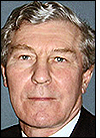The European Commission (EC) has issued a decision regarding the harmonization of the radio spectrum for RFID devices operating in the ultrahigh-frequency (UHF) band. The ruling requires EU member nations to designate UHF spectrum for RFID and make it available within the next six months. This decision makes previous recommendations mandatory, alleviating some concerns about the ability of European companies to implement large-scale UHF RFID systems (see ETSI Group Plans Dense-Reader Trial).
The previous, voluntary recommendations for RFID spectrum were published by the European Conference of Post and Telecommunications Administrations (CEPT), but a few member states chose not to implement the recommendations, including Belgium, Greece, Hungary, Ireland, Italy, Luxembourg, Malta and Portugal. Many of these countries are now saying, however, that they will have the decision in place before the end of the year. It is possible they had anticipated the decision, says John Falck, chairman of ETSI’s Electromagnetic Compatibility and Radio Spectrum Matters Task Group 34 (ERM TG34), a task group focused on RFID. ETSI represents 46 national communications authorities across the European Union (EU).
These nations, like all member states, must now designate spectrum on a non-exclusive, non-interference and non-protected basis. No harmful interference may be caused to any radio communications service, and RFID users can not make any claims for protection from harmful interference originating from radio communications services.
RFID UHF bandwidth across the EU is set at 3 MHz (865 MHz to 868 MHz), with RFID interrogators able to transmit at maximum power (2 watts ERP) for only 2 MHz of that bandwidth (865.6 MHz to 867.6 MHz). RFID UHF bandwidth in North America, on the other hand, is set at 26 MHz. In addition, European transmission channels max out at 200 kHz, versus a maximum of 500 kHz in North America.
Since the UHF spectrum in Europe is already occupied by the GSM mobile-phone industry, EU countries have had to develop alternative techniques that give a broadly equivalent function to what is achievable in the United States. “RFID came along after GSM was already up and running,” says Falck. “Finding any available spectrum at all at UHF was very difficult. As a result, we had to develop techniques that allow us to operate within our designated 2 MHz band and provide solutions.”
The commission’s decision, published on Nov. 23, also paves the way for the removal of “listen before talk” requirements in Europe (see ETSI Group Explores RFID Spectral Needs). Some say such restrictions make it difficult to use RFID in the UHF band.
“The new EC decision does not mandate the use of ‘listen before talk,'” Falck says. “This means that CEPT’s recommendations should be modified to bring it in line with the EC decision and the ‘listen before talk’ requirement should be removed. National administrations that adopt the amended recommendation will not, therefore, be required to include ‘listen before talk’ in their national regulations.”
Still, end users should not expect a quick move away from ‘listen before talk’ systems. The requirement has been incorporated into an ETSI standard (EN 302 208), and all RFID products on the market must comply with this standard.
“For the next little while, the regulatory situation for the industry will remain unchanged,” Falck says. “However, behind the scenes, work has started on the process to remove the requirement for ‘listen before talk’ from the standard.” The revised standard may be available by early 2008, he predicts.


